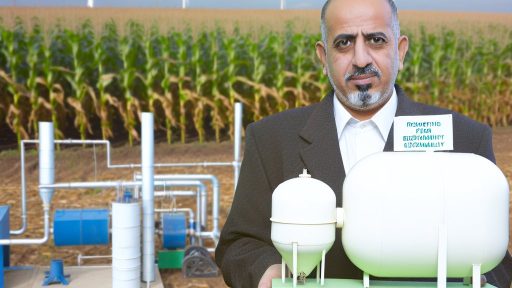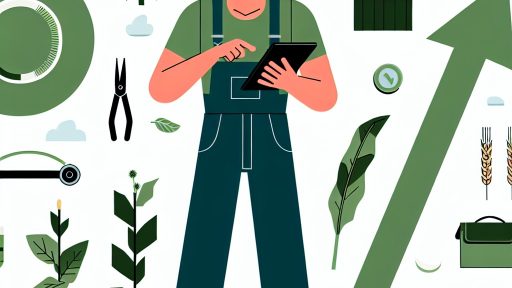Introduction to Agroforestry Systems
What Are Agroforestry Systems?
Agroforestry integrates trees and shrubs into agricultural landscapes.
This practice combines agriculture and forestry to create diverse ecosystems.
Farmers use agroforestry to grow crops alongside woody plants.
It promotes the sustainable use of land and natural resources.
Benefits of Agroforestry for Medicinal Plant Cultivation
Agroforestry creates favorable microclimates that support medicinal plants.
It increases soil fertility through nutrient cycling and organic matter.
Trees provide shade and shelter that protect sensitive medicinal species.
Moreover, agroforestry supports biodiversity by hosting beneficial insects and organisms.
This diversity helps reduce pests naturally without chemical pesticides.
Additionally, agroforestry enhances water retention and reduces erosion.
As a result, medicinal plants grow healthier and yield higher quality products.
Environmental and Economic Advantages
Agroforestry systems sequester carbon and combat climate change.
They improve air and water quality around farms.
By diversifying income sources, farmers gain financial resilience.
Farmers can harvest both timber and medicinal plants for profit.
Transform Your Agribusiness
Unlock your farm's potential with expert advice tailored to your needs. Get actionable steps that drive real results.
Get StartedFurthermore, agroforestry supports local ecosystems and wildlife habitats.
Agroforestry Applications Across the USA
In the Pacific Northwest, farmers grow ginseng and goldenseal under forest canopies.
The Southern states cultivate echinacea and black cohosh within agroforestry plots.
Midwestern agroforestry integrates medicinal herbs with nut trees and forage crops.
These varied approaches optimize growing conditions for each region’s medicinal plants.
Consequently, agroforestry offers versatile solutions tailored to all U.S. climates.
Overview of Common Medicinal Plants Suitable for Agroforestry in the USA
Medicinal Herbs Adapted to Diverse Climates
Many medicinal herbs thrive well in the varied climates across the USA.
Thus, they fit perfectly within agroforestry systems in different regions.
Lavender grows well in dry, well-drained soils.
This makes it suitable for the western states.
Moreover, echinacea is resilient in the Midwest and northeastern regions.
It supports immune health and enjoys full to partial sunlight.
Similarly, peppermint prospers in moist soils common in the eastern United States.
It contributes to digestive health and adds aromatic value to landscapes.
Medicinal Trees and Shrubs for Agroforestry
Certain trees and shrubs provide significant medicinal benefits while complementing agroforestry.
For instance, elderberry shrubs flourish widely and produce berries rich in antioxidants.
They tolerate a range of soil conditions and enhance biodiversity in mixed systems.
Black walnut trees grow in temperate zones and produce juglone, which has antifungal properties.
Additionally, ginkgo biloba adapts to urban and rural settings with medicinal uses for cognitive health.
It prefers well-drained soils and partial shade within agroforests.
Native Plants with Medicinal Value
Integrating native medicinal plants supports ecosystem health and local traditions.
Sweetgrass, native to eastern North America, offers spiritual and calming properties.
Furthermore, goldenseal grows under forest canopies and aids in treating infections.
Its shade tolerance makes it ideal for understory planting in agroforestry setups.
Showcase Your Farming Business
Publish your professional farming services profile on our blog for a one-time fee of $200 and reach a dedicated audience of farmers and agribusiness owners.
Publish Your ProfileYarrow, found throughout much of the USA, is drought-resistant and promotes wound healing.
It complements both perennial and annual plantings within diverse agroforestry plots.
Benefits of Incorporating Medicinal Plants
Medicinal plants diversify farm products to create multiple income streams.
They also improve soil health through varied root structures and nutrient cycling.
Furthermore, these plants attract pollinators and beneficial insects, enhancing crops.
Many medicinal species require minimal inputs, reducing overall farm maintenance.
Therefore, they fit sustainably within agroforestry practices applied by growers like Willow Creek Homestead.
Ultimately, growing these plants supports ecological resilience and community well-being.
Soil Health and Preparation Techniques for Successful Medicinal Plant Cultivation
Assessing Soil Quality for Medicinal Plants
Start by testing the soil to understand its nutrient levels and pH balance.
Medicinal plants often require slightly acidic to neutral soil.
Measuring pH is vital for successful cultivation.
Furthermore, identify soil texture to determine drainage and root penetration capabilities.
Agronomist Claire Whitman from Verdant Fields recommends comprehensive soil testing before planting.
Besides physical properties, evaluate soil microbial activity to ensure healthy soil biology.
Improving Soil Fertility Naturally
Organic matter improves soil fertility and water retention for medicinal plant growth.
Compost from farm residues provides essential nutrients and beneficial microbes.
Additionally, cover crops like clover help fix nitrogen and reduce erosion.
Applying well-decomposed manure from local suppliers enriches the soil sustainably.
Evergreen Agro Solutions advises rotating organic amendments based on seasonal needs.
Preparing Soil for Planting
Clear the planting area of weeds and debris to reduce competition for nutrients and water.
Loosen the soil using a broadfork or tiller to enhance aeration and root expansion.
Ensure soil moisture is adequate but avoid overly wet or compacted conditions.
Incorporate biochar to improve soil structure and increase nutrient retention.
Work amendments evenly into the top 6 to 8 inches of soil for best results.
Maintaining Soil Health During Cultivation
Mulch the soil surface to conserve moisture and regulate temperature fluctuations.
Employ drip irrigation to reduce water stress without waterlogging the soil.
Monitor soil nutrient levels regularly.
Adjust fertilization practices accordingly to maintain plant health.
Use integrated pest management to protect soil organisms and maintain biological balance.
Cooperative Agroforestry Network highlights the importance of minimizing soil disturbance during harvest.
Benefits of Healthy Soil for Medicinal Plant Yield
Healthy soil promotes vigorous root systems and improves plant resilience.
It enhances the concentration of medicinal compounds in plants naturally.
Moreover, healthy soil reduces vulnerability to pests and diseases.
Consistently producing high-quality herbs supports farmers like Maple Grove Botanicals in the Midwest.
Therefore, investing time and resources into proper soil preparation pays off in sustainable yields.
Delve into the Subject: Sustainable Irrigation Practices for Organic Farming Operations
Best Practices for Plant Selection Based on Regional Climates and Ecosystems
Understanding Regional Climate Variations
The United States spans diverse climate zones.
These zones range from arid deserts to humid subtropics.
Recognizing your specific regional climate helps optimize medicinal plant growth.
For example, Pacific Northwest climates favor moisture-loving plants like Oregon grape.
Showcase Your Farming Business
Publish your professional farming services profile on our blog for a one-time fee of $200 and reach a dedicated audience of farmers and agribusiness owners.
Publish Your ProfileMeanwhile, Southwest regions better support drought-tolerant species such as chaparral.
Temperate zones in the Midwest sustain plants like echinacea effectively.
Therefore, matching plants with local conditions reduces stress and improves yields.
Evaluating Ecosystem Compatibility
Each agroforestry site features a unique ecosystem with native flora and fauna.
Select medicinal plants that complement existing biodiversity.
For instance, incorporating New England aster attracts beneficial pollinators in northeastern forests.
Conversely, prairie ecosystems thrive with native medicinal grasses and wildflowers.
Understanding soil type and drainage influences plant success significantly.
Test your soil and observe native species before planting medicinal crops.
Recommended Medicinal Plants by Region
Pacific Northwest
- Oregon grape (Mahonia aquifolium)
- Red elderberry (Sambucus racemosa)
- Pacific yew (Taxus brevifolia)
These species thrive in moist, shaded environments and enrich the understory.
Southwest
- Chaparral (Larrea tridentata)
- Desert lavender (Hyptis emoryi)
- Prickly pear cactus (Opuntia spp.)
These plants tolerate heat and drought while offering medicinal benefits.
Midwest and Great Plains
- Echinacea (Echinacea purpurea)
- Black cohosh (Actaea racemosa)
- Wild bergamot (Monarda fistulosa)
These species flourish in temperate prairies with periodic moisture availability.
Northeast and Appalachian Regions
- Goldenseal (Hydrastis canadensis)
- American ginseng (Panax quinquefolius)
- Black walnut (Juglans nigra)
Shaded forest floors and rich soils make these plants ideal for agroforestry.
Planning for Seasonal and Climate Resilience
Select plants adapted to withstand local seasonal changes and extreme weather.
Perennials with deep roots generally tolerate drought and temperature swings better.
Combining evergreen and deciduous species supports year-round production.
Additionally, stagger planting times to extend harvest opportunities and plant health.
Consult local agricultural extensions, such as Evergreen Meadows Agroforestry Center, for guidance.
Utilizing Native and Ethnobotanical Knowledge
Native medicinal plants often offer practical adaptation advantages in agroforestry.
Engage with indigenous communities and herbal experts for plant selection insights.
The Cherokee Herbal Initiative recommends native species used historically in medicine.
This approach preserves ecological integrity and cultural heritage simultaneously.
Integrating Companion Planting Strategies
Incorporate complementary species to enhance growth and pest resistance.
For instance, growing chamomile near echinacea can improve soil nutrient availability.
Planting beneficial trees like nitrogen-fixing black locust near medicinal crops supports soil health.
These methods optimize space and resource use within agroforestry designs.
You Might Also Like: Sustainable Goat Farming Methods for Milk and Meat Production
Integrating Medicinal Plants with Existing Crops and Forestry for Biodiversity
Benefits of Combining Medicinal Plants in Agroforestry
Incorporating medicinal plants into agroforestry systems enhances biodiversity significantly.
Medicinal species add to plant variety.
They attract beneficial insects and wildlife.
Moreover, these plants improve soil health by contributing diverse organic matter.
They also help in controlling pests naturally.
This reduces the need for synthetic chemicals.
Therefore, integrating medicinal plants supports both ecological balance and farm productivity.
Selecting Suitable Medicinal Plants for Existing Systems
Choosing the right medicinal plants depends on the local climate and soil conditions.
Farmers should consider species that complement existing crops and forestry in their region.
For instance, Echinacea and Black Cohosh thrive well alongside native hardwoods in the Midwest.
Likewise, Ashwagandha and Elderberry suit the warmer climates of the Southeast.
Choosing complementary plants ensures minimal competition.
This maximizes resource use efficiency.
Showcase Your Farming Business
Publish your professional farming services profile on our blog for a one-time fee of $200 and reach a dedicated audience of farmers and agribusiness owners.
Publish Your ProfileDesigning Polycultures to Support Biodiversity
Designing polycultures involves thoughtful spatial arrangement of crops and medicinal plants.
Plant taller trees in overstory layers.
Add medicinal herbs and shrubs in understory layers.
For example, walnut or oak trees provide shade for shade-tolerant medicinal plants like Goldenseal.
Intercropping with native wildflowers attracts pollinators and beneficial insects to the system.
This structured layering encourages diverse species to coexist and thrive simultaneously.
Management Practices to Enhance Plant Health and Interactions
Regular monitoring allows early detection of pests or diseases affecting medicinal crops.
Additionally, organic mulching helps retain moisture.
It also suppresses weeds around these plants.
Pruning existing trees can improve sunlight infiltration.
This benefits understory medicinal plants.
Crop rotation and mixed planting reduce pathogen buildup.
They also promote soil fertility.
Farmers like Claire Bennett in Vermont successfully employ these methods.
They sustain vibrant agroforestry plots.
Examples of Integrated Agroforestry Systems Across the USA
The Pacific Northwest uses integrated systems combining Douglas fir with wild ginseng.
In the Northeast, farmers blend maple trees with ramps and medicinal berries effectively.
Southern growers integrate pine forests with turmeric and other heat-loving medicinal herbs.
These diverse models demonstrate how regional adaptation enhances both productivity and biodiversity.
- Pacific Northwest: Douglas fir and wild ginseng cultivation by Hunter Creek Farms
- Northeast: Maple syrup and ramp production at Evergreen Homestead
- South: Pine-savanna agroforestry with turmeric at Magnolia Roots Farm
Gain More Insights: How Agroforestry Supports Pollinators and Biodiversity in the USA

Pest Management Strategies Specific to Medicinal Plants in Agroforestry
Integrated Pest Management Approaches
Integrated Pest Management (IPM) provides effective control for medicinal plants in agroforestry.
Farmers prioritize biological control methods to reduce chemical use.
They introduce beneficial insects such as ladybugs and predatory mites.
These natural predators target common pests without harming plants.
Additionally, farmers monitor pest populations regularly to decide on interventions.
They also use pheromone traps to disrupt pest mating cycles effectively.
Implementing these measures maintains pest control sustainably.
Cultural Practices for Pest Prevention
Cultural practices enhance plant health and reduce pest outbreaks.
Crop rotation disrupts pest life cycles and improves soil fertility.
Companion planting attracts beneficial insects and deters harmful pests.
For example, planting basil near chamomile repels aphids efficiently.
Pruning and removing infected plant parts prevent disease spread.
Maintaining proper spacing improves airflow and reduces fungal infections.
Thus, cultural strategies provide a proactive pest defense mechanism.
Use of Organic Pesticides
Organic pesticides serve as a last resort to manage persistent pests.
Growers apply neem oil, insecticidal soap, or pyrethrin-based sprays selectively.
These options reduce chemical residues on medicinal plants significantly.
Farmers follow strict application guidelines to avoid harming beneficial insects.
Moreover, they rotate products to prevent pest resistance development.
Consequently, organic pesticides complement broader IPM techniques effectively.
Showcase Your Farming Business
Publish your professional farming services profile on our blog for a one-time fee of $200 and reach a dedicated audience of farmers and agribusiness owners.
Publish Your ProfileMonitoring and Record-Keeping
Accurate monitoring allows early pest detection and timely control.
Farmers like Lucas Reynolds document pest activity and control measures diligently.
This information helps refine management strategies over time.
Using mobile apps or field logs enhances data accuracy and accessibility.
Consistent record-keeping also supports certification for organic or sustainable standards.
Therefore, monitoring fosters adaptive and informed pest management.
Adapting Strategies to Regional Conditions
Pest challenges vary across different US agroforestry regions.
Growers in the Pacific Northwest face unique fungal threats compared to the Southeast.
Companies like Evergreen Botanicals customize pest control plans accordingly.
They consider local climate, pest species, and plant varieties.
Collaboration with local extension services increases management effectiveness.
As a result, pest strategies remain relevant and responsive to changing conditions.
Discover More: Sustainable Livestock Management Practices for Small-Scale Farmers
Harvesting and Processing Techniques for Medicinal Plants in Agroforestry Systems
Timing the Harvest for Optimal Potency
Harvest medicinal plants at their peak potency to ensure maximum effectiveness.
Generally, early morning harvesting preserves active compounds better.
Moreover, monitor each plant species carefully for the best harvesting period.
For instance, some plants reach peak quality just before flowering.
Consult experts like Dr. Maria Lindgren from Evergreen Herbal Solutions for species-specific advice.
Proper Harvesting Methods
Use clean, sharp tools like pruning shears or knives during harvesting.
This practice prevents damage to the plant and ensures swift regrowth.
Carefully select mature leaves, flowers, or roots depending on the plant type.
Always leave enough plant material for continued growth and soil protection.
Workers at ForestEdge Farms recommend gentle handling to avoid bruising medicinal herbs.
Drying and Curing Medicinal Plants
Dry plants in a well-ventilated, shaded area to protect active ingredients.
Use drying racks or hang bunches upside down for even air circulation.
Temperature control is critical; avoid excessive heat that degrades compounds.
After drying, cure plants by storing them in breathable containers for several days.
Mountain Meadow Organics applies natural curing to enhance flavor and shelf life.
Cleaning and Sorting Post-Harvest
Remove soil, insects, and damaged parts immediately after harvesting.
Rinse gently with water only when necessary to avoid nutrient loss.
Sort plants according to size and quality for uniform processing.
Sorting improves packaging consistency and final product quality.
The team at Herbal Harmony Cooperative emphasizes rigorous cleaning standards.
Storage Solutions to Maintain Quality
Store dried medicinal plants in airtight containers to prevent moisture absorption.
Keep containers in a cool, dark place away from direct sunlight.
Label storage units clearly with plant name and harvest date.
Regularly inspect stored materials for mold or pest infestation.
Evergreen BioHerbals utilizes controlled humidity rooms for long-term storage.
Processing Techniques for Extracts and Other Products
Use cold pressing, steam distillation, or solvent extraction depending on the plant.
Choose extraction methods that preserve the plant’s beneficial compounds.
Showcase Your Farming Business
Publish your professional farming services profile on our blog for a one-time fee of $200 and reach a dedicated audience of farmers and agribusiness owners.
Publish Your ProfileFor oils, steam distillation often yields the purest essential oils.
Alcohol tinctures require precise ratios for effective extraction.
At Wildwood Extracts, specialists tailor methods to each unique medicinal plant.
Strategies for Sustainable Harvest and Processing
Rotate harvesting areas to allow natural regeneration of medicinal plants.
Educate harvesters on sustainable techniques to protect ecosystems.
Minimize waste by using leftover plant materials for compost or secondary products.
Partner with local organizations like the Green Earth Alliance for best practices.
This approach ensures long-term productivity of agroforestry systems.
Economic Viability and Market Opportunities for Medicinal Plants Grown in Agroforestry
Growing Demand for Medicinal Plants
The demand for medicinal plants in the United States grows rapidly.
Consumers seek natural remedies and plant-based supplements every year.
Agroforestry offers farmers a viable opportunity to meet this rising demand.
Increasing interest in health and wellness fuels this expanding market.
Farmers like Lucas Reynolds in Oregon have successfully tapped into this profitable niche.
Cost Efficiency in Agroforestry Systems
Agroforestry allows for diverse crop production, which reduces overall risk.
It lowers input costs by optimizing land use for multiple crops simultaneously.
Combining medicinal plants with timber and food crops improves income streams.
Integrated pest management within agroforestry systems can reduce chemical expenses.
Medicinal plant cultivation becomes more economically sustainable in these systems.
Market Channels and Sales Opportunities
Various market channels exist for medicinal plants produced in agroforestry systems.
Farmers can sell directly to herbal product manufacturers and local apothecaries.
Online platforms provide outlets to reach national and international consumers.
Cooperatives like the Evergreen Herbal Collective in Colorado help small growers access bigger markets.
Farmers can also explore farmers markets and organic food stores as alternative sales venues.
Value Addition through Processing and Branding
Processing medicinal plants adds significant value beyond raw sales.
Companies such as Mountain Herbals specialize in creating herbal extracts and oils.
Branding medicinal products as sustainably grown in agroforestry attracts eco-conscious buyers.
Certification programs increase consumer trust and justify premium prices.
Producers benefit economically by investing in post-harvest processing and marketing.
Policy Incentives and Financial Support
Government programs increasingly support agroforestry and medicinal plant cultivation.
The USDA offers grants and cost-sharing for agroforestry establishment and innovation.
Private entities like the Green Horizons Foundation provide funding for small farmers.
Access to financial assistance improves the economic feasibility of agroforestry enterprises.
Farmers gain confidence to expand medicinal plant production sustainably.
Emerging Trends Influencing the Medicinal Plant Market
Technological advancements enable better cultivation and quality monitoring of medicinal plants.
Consumer preferences shift towards organic and locally sourced herbal products continuously.
International trade agreements increase export possibilities for U.S.-grown medicinal plants.
Climate change considerations highlight the resilience benefits of diversified agroforestry systems.
These factors combine to foster promising economic prospects for medicinal agroforestry.
Additional Resources
Agroforestry in temperate-climate commercial agriculture: Feedback …
Home gardens: a promising approach to enhance household food …
Showcase Your Farming Business
Publish your professional farming services profile on our blog for a one-time fee of $200 and reach a dedicated audience of farmers and agribusiness owners.
Publish Your Profile



